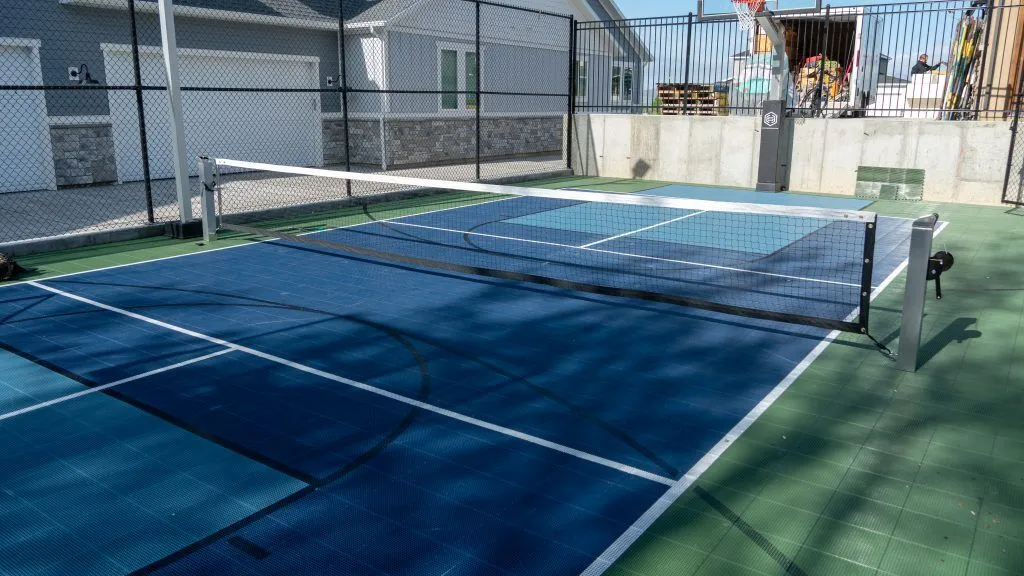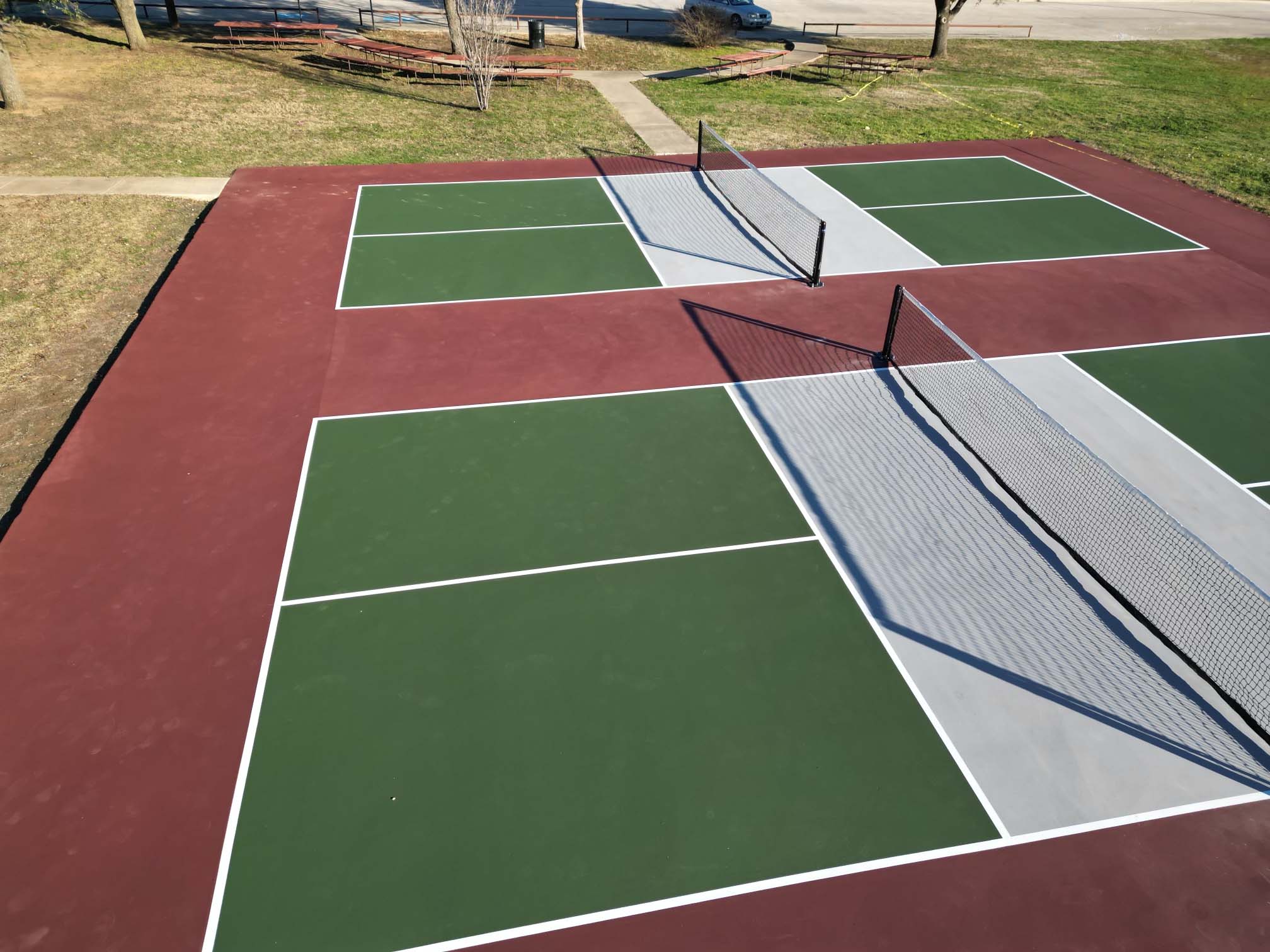Pickleball Court Construction-- Beginning Structure Your Perfect Court Today
Wiki Article
Lasting Practices in Pickleball Court Building You Need To Know
As the appeal of pickleball continues to climb, so as well does the need for sustainable practices in court building. The effect of these practices extends far past the court itself.Choosing Eco-Friendly Products
Picking green products is an important action in the building and construction of lasting pickleball courts. The selection of sustainable materials not just lessens environmental impact but likewise improves the durability and performance of the court. Secret materials include recycled rubber for the surface area, which supplies excellent longevity and shock absorption while diverting waste from garbage dumps.Furthermore, making use of locally sourced materials minimizes transportation emissions and sustains local economies. Pickleball court construction. Making use of indigenous hardwoods for secure fencing and seats can offer a sustainable aesthetic while ensuring strength against the aspects.
Integrating absorptive products for court foundations can better add to sustainability by enabling all-natural water drain and decreasing drainage. These options not only shield regional ecological communities however also advertise healthier play settings.
Efficient Drainage Solutions
While the choice of green products is vital, carrying out efficient drain services is just as essential for preserving lasting pickleball courts. Appropriate water drainage not only shields the court surface area from water damage yet also decreases erosion and runoff, promoting environmental stability.Effective drainage systems can consist of permeable paving, which permits water to infiltrate the ground instead of pooling externally. This lowers the likelihood of standing water, which can lead to mold and other upkeep concerns. Furthermore, incorporating tactically put water drainage networks and swales can route excess water far from the court area, ensuring a completely dry having fun surface area and avoiding soil disintegration.
Using indigenous greenery in the landscaping around the courts can additionally improve drain by taking in excess water and decreasing overflow. These plants require much less watering and promote biodiversity, aligning with sustainable practices.
Moreover, it is critical to frequently preserve the drainage system to guarantee its lasting effectiveness. This includes cleaning debris and tracking for obstructions. By focusing on reliable water drainage solutions, pickleball court manufacturers can significantly add to the sustainability and longevity of the center, inevitably benefiting both players and the setting.
Energy-Efficient Lighting Options
As the need for pickleball remains to grow, incorporating energy-efficient lighting choices right into court layout has come to be progressively vital for sustainability. Traditional illumination systems usually consume extreme power, adding to higher operational expenses and ecological influence. Adopting modern, energy-efficient innovations is crucial for both brand-new buildings and remodellings.LED (Light Emitting Diode) lights stands apart as a top option because of its durability and energy savings (Pickleball court construction). Compared to conventional illumination, LEDs utilize around additional reading 75% less energy and can last approximately 25 times longer, substantially decreasing upkeep expenses. Moreover, the directional nature of LED lights decreases light pollution, making sure that illumination is concentrated on the court as opposed to bordering areas.

Sustainable Surface Area Alternatives
Checking out lasting surface options for pickleball courts has gotten grip among gamers and contractors her explanation alike. The focus on environment-friendly materials not just aligns with the expanding ecological understanding yet additionally enhances the efficiency and sturdiness of the courts.One preferred alternative is the use of recycled rubber, which can be sourced from utilized tires. This product gives excellent shock absorption, reducing the risk of injuries for players while promoting sustainability. Additionally, modular tiles made from recycled plastics offer another feasible alternative. These floor tiles are easy to mount and replace, and their versatility enables various court configurations.
Natural yard courts are additionally becoming a sustainable option, promoting biodiversity and minimizing the heat island impact. However, they call for regular upkeep and water, which may not line up with all sustainability goals.

Water Preservation Methods

An additional reliable strategy entails the installment of rain harvesting systems. These systems keep and collect rain for usage in preserving court surfaces and landscaping. This technique not only saves potable water but additionally decreases dependence on local sources.
In addition, utilizing drought-resistant landscaping around the courts is essential. Native plants call for much less water and are better adapted to neighborhood climate conditions, therefore lowering overall water usage. In addition, utilizing effective watering systems, such as drip watering, makes certain that water is delivered directly to plant origins, minimizing evaporation and waste.
Final Thought
Incorporating lasting practices in pickleball court building significantly adds to environmental preservation and source efficiency. By prioritizing these techniques, the construction of pickleball courts can line Discover More Here up with more comprehensive environmental goals while advertising long life and functionality within neighborhoods.As the appeal of pickleball proceeds to rise, so too does the requirement for lasting techniques in court construction.Choosing environment-friendly products is an essential step in the building of sustainable pickleball courts. By prioritizing energy-efficient illumination choices, pickleball court producers can add to an extra lasting future while fulfilling the demands of stakeholders and gamers alike.Including lasting surface alternatives not just boosts the efficiency of pickleball courts however also leads the means for carrying out efficient water conservation methods.Integrating sustainable techniques in pickleball court building and construction substantially contributes to environmental conservation and source performance.
Report this wiki page